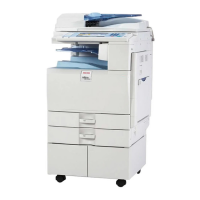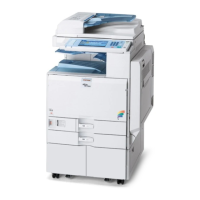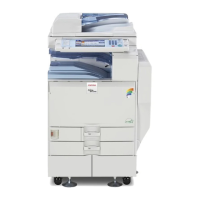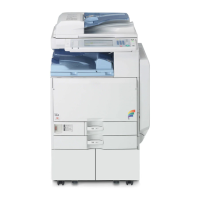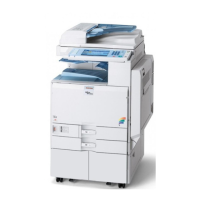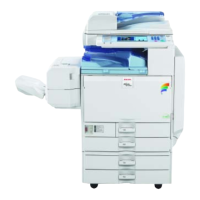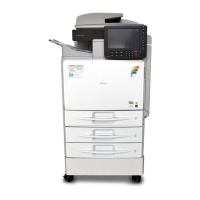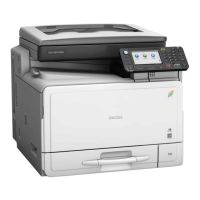12. Click [TCP/IP], and then click [Search].
A list of printers using TCP/IP appears.
13. Select the printer you want to use, and then click [OK].
Only printers that respond to a broadcast from the computer appear. To use a machine not listed
here, click [Specify Address], and then enter the IP address or host name of the machine.
14. Check that the port of the selected printer is displayed in [Port].
15. Set a user code, if necessary.
Up to 8 numeric characters can be entered. No alphabetic characters or symbols can be entered.
16. Select the [Default Printer] check box to configure the printer as default.
17. Click [Continue].
Installation starts.
18. After the installation is completed, select one of the options to restart the computer either
now or later, and then click [Finish].
• Setting a user code allows a SmartDeviceMonitor for Admin user to display and check statistics about
the number of sheets which each user prints. For details, see SmartDeviceMonitor for Admin Help.
• Auto Run may not work with certain operating system settings. If this happens, launch "Setup.exe" on
the CD-ROM root directory.
• A message appears if there is a newer version of the printer driver already installed. If there is, you
cannot install the printer driver using Auto Run. If you still want to install the printer driver, use [Add
Printer]. See "Messages Displayed When Installing the Printer Driver", Troubleshooting.
Installing the PCL or RPCS printer driver (IPP)
1. Quit all applications currently running.
2. Insert the CD-ROM into the CD-ROM drive.
The installer starts.
3. Select an interface language, and then click [OK].
4. Click [RPCS Printer Driver] or [PCL Printer Driver].
5. The software license agreement appears in the [License Agreement] dialog box.
After reading the agreement, click [I accept the agreement.], and then click [Next >].
6. Select a printer driver you want to use in the [Select Program] dialog box.
You can select several printer drivers.
7. Click [Next >].
Installing the Printer Driver
33
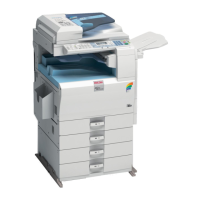
